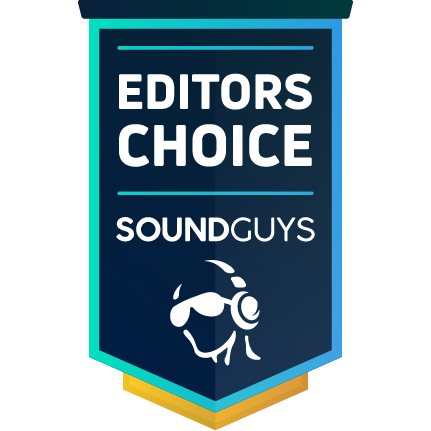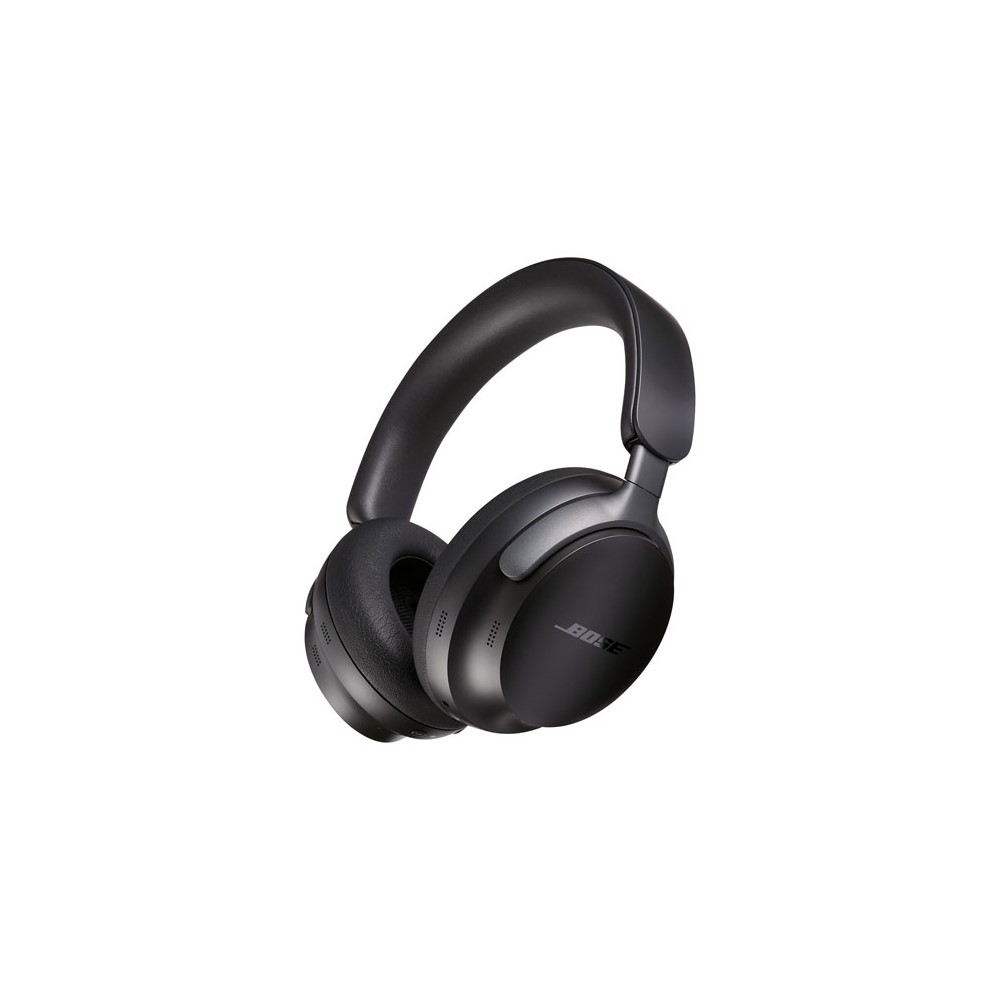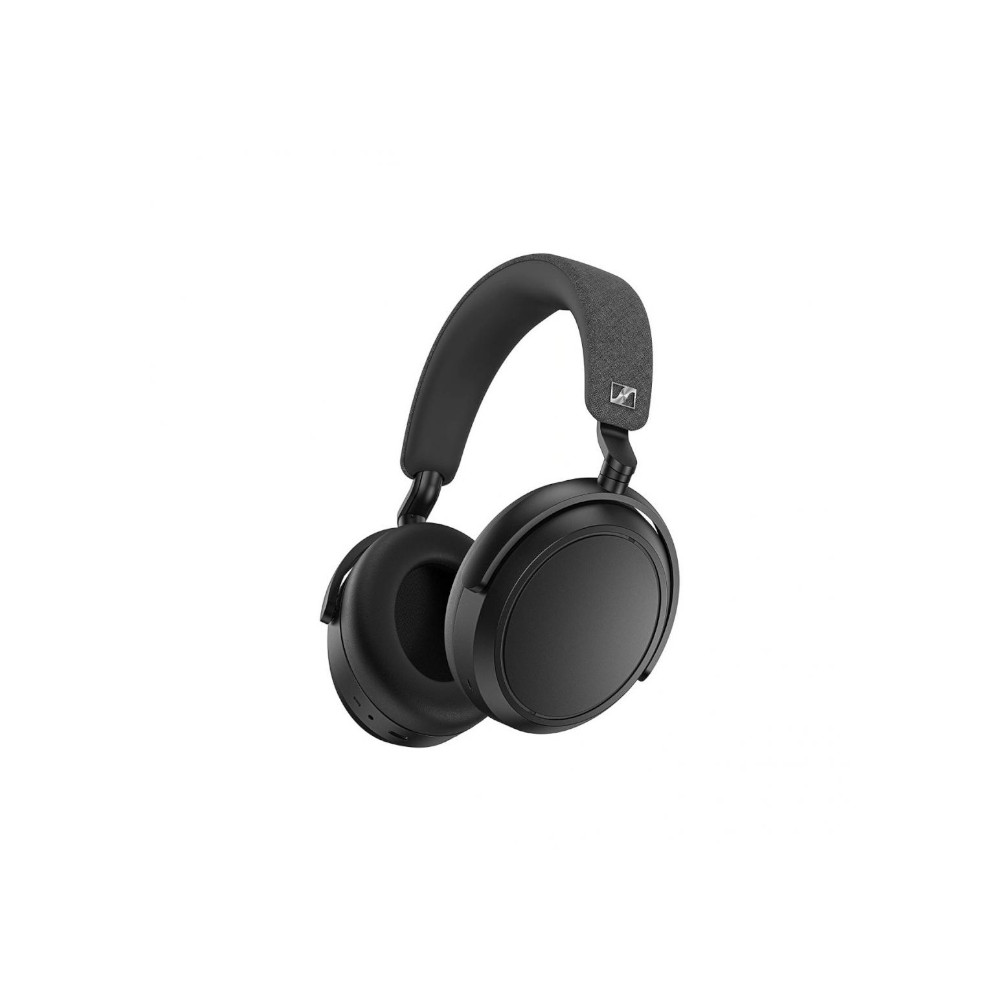All products featured are independently chosen by us. However, SoundGuys may receive a commission on orders placed through its retail links. See our ethics statement.
The five best Sony WH-1000XM6 alternatives
June 12, 2025
The Sony WH-1000XM6 launched on May 15, 2025, and quickly topped our list of the best Bluetooth headphones. With excellent active noise canceling, industry-leading microphone quality, and top-class audio, there’s plenty to love about them. However, Sony stapled an eyewatering price tag to its latest and greatest over-ears. While they stand out in many ways, rival headphones will serve listeners with specific needs better in the long run. With that in mind, here are five Sony WH-1000XM6 alternatives to consider before spending a penny.
Best for price-conscious Sony fans: Sony WH-1000XM5


If you’re new to Sony or are upgrading from older Sony headphones, consider purchasing the WH-1000XM5. With many of the same features as their successor, the XM5 are a great option if you want to save some cash. For example, the headphones’ in-call microphone quality is second only to the newest Sony XM6. This does an excellent job of rejecting intrusive environmental sounds from wind noise, street traffic, and keyboard clicks.
Frequent commuters will appreciate the XM5’s nearly 32 hours of ANC-enabled battery life. While this falls just shy of the XM6’s 37 hours, the XM5 will last longer with ANC switched off, delivering over 53 hours of listening time. Both headphones yield three hours of charge from a three-minute top-up and feature a USB-C charging port. However, unlike with the WH-1000XM6, you cannot listen to the XM5 while charging the headphones over USB-C. Neither headphone supports USB-C audio streaming, either, and instead use a 3.5mm TRS cable for wired audio.
The Sony WH-1000XM6 cost $449.99 at launch, while the WH-1000XM5 can frequently be found on sale for less than $350.
While the newest XM6 fix the harsh treble peaks and over-emphasized bass response of the XM5, Sony’s older headphones retain an overall score of 4.2 in our MDAQS testing. This indicates that the Sony WH-1000XM5 feature decent sound quality that most people will enjoy. Both headphones connect wirelessly over the SBC, AAC, and LDAC Bluetooth codecs. The last provides up to 990kbps, 24-bit/96kHz Hi-Res audio sampling with compatible devices. Unfortunately, Sony has yet to support the desirable aptX codec with either the XM5 or XM6. However, the XM6 pulls ahead with Bluetooth 5.3 and the promise of future-proof connectivity like Auracast with LE Audio and the LC3 codec.
The ANC performance of the XM5 and XM6 is cut from the same cloth. Both perform exceptionally well, with the XM5 reducing ambient noise by up to 84%. This is just 3% less than Sony’s newest headphones, and the XM6’s ANC microphone protrudes slightly within the cup. This can rub against the outer ear and cause discomfort, something the XM5 doesn’t contend with. Both headphones use the Sony Sound Connect app. This unlocks a 10-band custom EQ, Sony’s 360 Reality Audio feature, speak-to-chat, and hand gesture control. The XM6 adds the ability to upmix stereo content into spatial sound. However, some will question whether this is worth the added expense.
Read our full Sony WH-1000XM5 review
Best for iPhones: Apple AirPods Max


While the Sony WH-1000XM6 are reasonably OS-agnostic, they are less compatible with iOS devices than the AirPods Max. This is because the latter have many Apple-exclusive features that elevate the user experience. One of these is the Siri voice assistant, which can control the headphones, answer calls, and provide hands-free notifications. Without an iPhone, you’re left to manually control the headphones with the Digital Crown dial and the noise control button.
Other notable iOS-exclusive features include automatic switching between Apple devices and Adaptive EQ. Movie enthusiasts can also enjoy Apple’s Spatial Audio with dynamic head tracking. This emulates the illusion of a surround sound speaker system and follows your head movement for a more realistic experience. A recent firmware update also brings lossless-quality audio streaming via USB-C to the AirPods Max — something the Sony WH-1000XM6 strikingly forgoes.
The Apple AirPods Max remain the best choice for iPhone users thanks to their Apple-centric features.
The Sony WH-1000XM6 and Apple AirPods Max beget top-tier ANC. However, while the XM6’s passive isolation blocks out 10dB more noise than the AirPods Max, the latter do a better job of attenuating low-frequency noise from plane engines and trains. With ANC enabled, the AirPods Max dampen external noises by 88% compared to the XM6’s 87%. Apple’s flagship headphones also enjoy one of the best transparency modes on the market. This amplifies external sounds in the useful voice band instead of canceling them out. It also amplifies the microphones to match what you’re listening to so that you never miss a beat.
Both headphones boast a pleasing frequency response that most people will enjoy. For example, the Apple AirPods Max score an overall rating of 4.5 in our MDAQS testing, while the XM6 scores 4.8. Sure, tinkerers receive more customization tools with Sony’s headphones. However, Apple’s Adaptive EQ feature provides a default sound that many won’t feel the need to alter. The AirPods Max also have decent-sounding microphone quality, provided you are taking calls from an iPhone.
Read our full AirPods Max review
Best for noise canceling and connectivity: JBL Tour One M3
The JBL Tour One M3 stand out in the overcrowded ANC headphone market. For starters, the cans score 8.7 in our ANC tests, reducing the prevalence of low-end noise by over 30dB. The ear cup design also does an impeccable job of passively attenuating high incidental noises from offices and passing conversations. With an ideal fit, the headphones cancel high-end frequencies around 7.5kHz by over 50dB. This competes directly with the Sony WH-1000XM6 without an irritating ANC microphone prodding your ear.
However, it isn’t just the Tour One M3’s ANC performance that makes them a worthy XM6 contender. They also feature future-proof tech in abundance, including Auracast broadcasting with the SMART Tx accessory. This handy device also allows you to turn non-Bluetooth sources into wireless transmitters and adjust the headphones’ EQ directly. Like the AirPods Max, the JBL Tour One M3 supports lossless USB-C or analog audio with their onboard DAC.
The JBL Tour One M3 outperform the Sony WH-1000XM6 regarding ANC performance and future-proof gadgets.
The JBL Tour One M3 also boast 18 hours longer battery than the Sony WH-1000XM6. With ANC enabled, JBL’s over-ears lasted 55 hours and 37 minutes in our testing. By comparison, Sony’s XM6 headphones lasted 37 hours and 14 minutes on a single charge. While the XM6 can fast-charge three hours of playtime from a 3-minute top-up, you’ll find yourself charging up less frequently with the JBL Tour One M3. This is ideal for prolonging the headphones’ battery health, as fewer charge cycles typically means less battery wear over time.
Sound quality is arguably one of the most important factors to consider when selecting headphones. Thankfully, the JBL Tour One M3 deliver in spades, especially when listening with the Jazz EQ applied. Once enabled, the headphones scored an overall rating of 4.6 in our MDAQS testing. While 0.2 points lower than the Sony WH-1000XM6, it’s worth remembering that the JBL Tour One M3 cost $50 less than Sony’s flagship headphones at launch.
Read our full JBL Tour One M3 review
Best for comfort: Bose QuietComfort Ultra Headphones


Superior comfort is vital to get the most out of your headphones, and the Bose QuietComfort Ultra Headphones are king of the hill. With ample plush padding and spacious ear cups, the headphones are easy to wear for hours on end. While Bose’s cans and the XM6 weigh virtually the same amount, Sony’s headphones wear thinner, more rigid padding. The ear cups are also significantly shallower, exacerbating the issue of the aforementioned ANC microphone. This will be particularly bothersome for those with larger ears.
Both the XM6 and QC Ultra Headphones run Bluetooth 5.3 and support the SBC and AAC codecs. Likewise, both headphones support Auracast audio streaming with LE Audio and feature 3.5mm analog connections. However, Bose pulls ahead in terms of Hi-Res wireless connectivity options. Instead of Sony’s LDAC codec, the Bose QC Ultra Headphones offer aptX Lossless and Snapdragon Sound connectivity. This yields 1200kbps, 24-bit/ 96kHz audio sampling in ideal conditions, and depending on your source device.
The Bose QC Ultra Headphones are the clear winner regarding comfort.
Noise canceling enthusiasts will get a lot of mileage out of the Bose QC Ultra Headphones. Sure, the XM6 technically have stronger ANC in ideal conditions, reducing the average loudness of ambient sounds by 87%. However, Bose’s flagship cans reliably attenuate distracting noises by 85% thanks to their superior fit. In particular, glasses wearers will be able to achieve better isolation and ANC with Bose’s headphones thanks to their larger ear cups and superior padding.
Our MDAQS testing reveals that the Sony WH-1000XM6 and Bose QC Ultra Headphones are tied in terms of sound quality. Judging by the results, both score 4.8 overall, with a slight lead in timbre and immersiveness for Bose’s headphones. Bass heads may also prefer Bose’s default sound profile thanks to the headphones’ sub-bass boost below 60Hz. However, the Bose Music app is less versatile than the Sony Connect app, delivering a very basic 3-band EQ.
Read our full Bose QuietComfort Ultra Headphones review
Best for battery life and sound quality: Sennheiser MOMENTUM 4 Wireless


Edging marginally ahead of the JBL Tour One M3, the Sennheiser MOMENTUM 4 Wireless have the longest battery life of all the wireless headphones we have tested here at SoundGuys. This stands at 56 hours and 21 minutes — 19 hours longer than the XM6’s 37 hours and 14 minutes of playtime. As mentioned earlier, fewer charging cycles mean slower battery degradation. Over a typical 5-6 year headphone lifespan, Sennheiser’s cans could last a full year longer than Sony’s.
While the XM6 scored higher in our MDAQS testing, the Sennheiser MOMENTUM 4 Wireless stick closer to our target preference curve. This reproduces a more natural sound and is easier to EQ to your liking. Fewer deviations from neutral also mean the headphones are better suited for critical listening. While Sennheiser’s cans boost sub-bass frequencies below 100Hz, they offer a more restrained treble extension that avoids fatigue-inducing peaks. In short, the Sennheiser MOMENTUM 4 Wireless are better at reproducing a wide range of music genres.
The Sennheiser MOMENTUM 4 Wireless enjoy significantly longer battery life than the Sony WH-1000XM6.
The Sennheiser MOMENTUM 4 Wireless offer a more versatile selection of Bluetooth codecs than the XM6. These include the SBC, AAC, aptX, aptX HD, and aptX Adaptive codecs. They can also connect a 3.5mm to 2.5mm TRRS cable to stream analog audio. However, unlike the XM6, Sennheiser’s headphones also support USB-C digital audio. This is superior, given that USB-C is likely to become the default wired audio streaming option in the future. For the longevity-minded, Sennheiser’s headphones are the more compelling choice.
Sennheiser’s headphones are less feature-rich than the XM6. Sure, you still receive ANC customization, geotagging profiles, and call auto-hold with Smart Pause. However, the MOMENTUM 4 Wireless do not enjoy the same ambitious spatial audio features and extensive app ecosystem as the XM6. Still, Sennheiser’s Smart Control app delivers EQ customization and firmware updates. All of this is bundled into a package that costs roughly $100 less than the Sony WH-1000XM6.
Read our full Sennheiser MOMENTUM 4 Wireless review
Who should buy the JLab JBuds Lux ANC?


It’s easy to feel disenfranchised with flagship ANC headphones that cost over $300. Thankfully, the JLab JBuds Lux ANC ($79.99 at Amazon) represent exceptional value for money for noise canceling headphone fans. While they don’t enjoy all the bells and whistles of the Sony WH-1000XM6, there’s a lot to appreciate under the hood.
For example, the JLab JBuds Lux ANC connect to devices using Bluetooth 5.3 over SBC or with USB-C audio. That’s right — a $80 pair of headphones enjoy future-proof tech that not even the Sony WH-1000XM6 support. JLab’s budget cans also rank highly in our MDAQS testing. Specifically, the headphones scored an overall rating of 4.5, which is just 0.3 points lower than the XM6. Timbre and immersiveness match like-for-like with the XM6, with scores of 4.8 and 4.4, respectively.
If you can't justify spending over $300 for a pair of ANC headphones, grab the JLab JBuds Lux ANC.
JLab’s battery life is also superior to the Sony WH-1000XM6. With ANC enabled, fans can expect the JBuds Lux ANC to last 44 hours and 22 minutes — that’s seven hours longer than the XM6. The headphones also support fast charging, with a 10-minute top-up yielding four hours of playtime. That’s comparable to the XM6, which delivers three hours of listening time from a 3-minute boost. The JLab app also features adjustable ANC modes, a volume limiter, and a 10-band custom EQ that rivals Sony’s.
The JLab JBuds Lux ANC begin to show their price point in the noise canceling department, but not so much as to void their worth. For example, the headphones quell low-frequency sounds below 700Hz by roughly 50-75%. While this pales in comparison to the XM6, the cans block up to 46dB of high-frequency outside noise. They also enjoy a better fit than the XM6, which helps glasses-wearers attain a tighter seal. This is thanks to the headphones’ deep ear cups, plush padding, and wider openings at the top of the cups to accommodate real ear shapes. The JLab JBuds Lux ANC also have foldable hinges like the Sony WH-1000XM6 for easier transport.
Read our full JLab JBuds Lux ANC review
But what do you think? Are the Sony WH-1000XM5 the best alternative to the XM6, or do rival brands offer better value for specific uses? Let us know in the poll below.
Which is the best Sony WH-1000XM6 alternative?
The best Sony WH-1000XM6 alternatives FAQs
The Sony WH-1000XM6 secured a higher overall score of 4.8 in our MDAQS testing compared to the Apple AirPods Max's result of 4.5. Generally speaking, this means that most people will prefer the default sound profile of the XM6 over the AirPods Max. Sony also offers more customization tools for tweaking your audio. However, many iOS fans will appreciate Apple's Adaptive EQ feature.
After surviving our standardized battery test, the Sony WH-1000XM6 delivered 37 hours and 14 minutes of continuous music playback time peaking at 75dBSPL.
The Sony WH-1000XM6 fix many of the pain points of the WH-1000XM5. These include the hinge system, default sound profile, and Bluetooth 5.3 with support for Auracast and LE Audio. The newer WH-1000XM6 also boast improved battery life, lasting roughly five hours longer than their predecessor. However, like the XM5, the XM6 do not support USB-C audio. This is an oversight, given that USB-C Audio is fast becoming the default listening option for wired and lossless audio.
This is a difficult decision, given the improvements that the XM6 bring are mostly comfort tweaks, minor audio gains, and Auracast support. The XM5s are still among the best ANC headphones on the market. Consequently, I wouldn't recommend upgrading to the XM6 until prices fall.
Thank you for being part of our community. Read our Comment Policy before posting.
